10 Minutes
Startup Fair 2025 – Hive Stage, Vilnius
One of the most relatable and practical discussions at Startup Fair 2025 took place not on the main Core Stage but on the Hive Stage, where founders gathered to explore a universal question: Who should be your first partner when launching a startup?
The session, titled “Accelerators vs. Angels vs. VCs: Choosing Your First Partner”, addressed the critical decisions early founders face when choosing between accelerators, angel investors, and venture capital funds — and how timing and alignment can define the success or failure of a young company.
Participants
Moderator:
Kamilė Šulcaitė — Head of Strategic Partnerships at Rockit
Panelists:
Adomas Malaiška — Business Development at NextQuestion
Marten Skogo — Partner at node.vc
Cyril Golub — Board Member at LatBAN
Lina Žemaitytė Kirkman — Managing Director at Rockit Vilnius
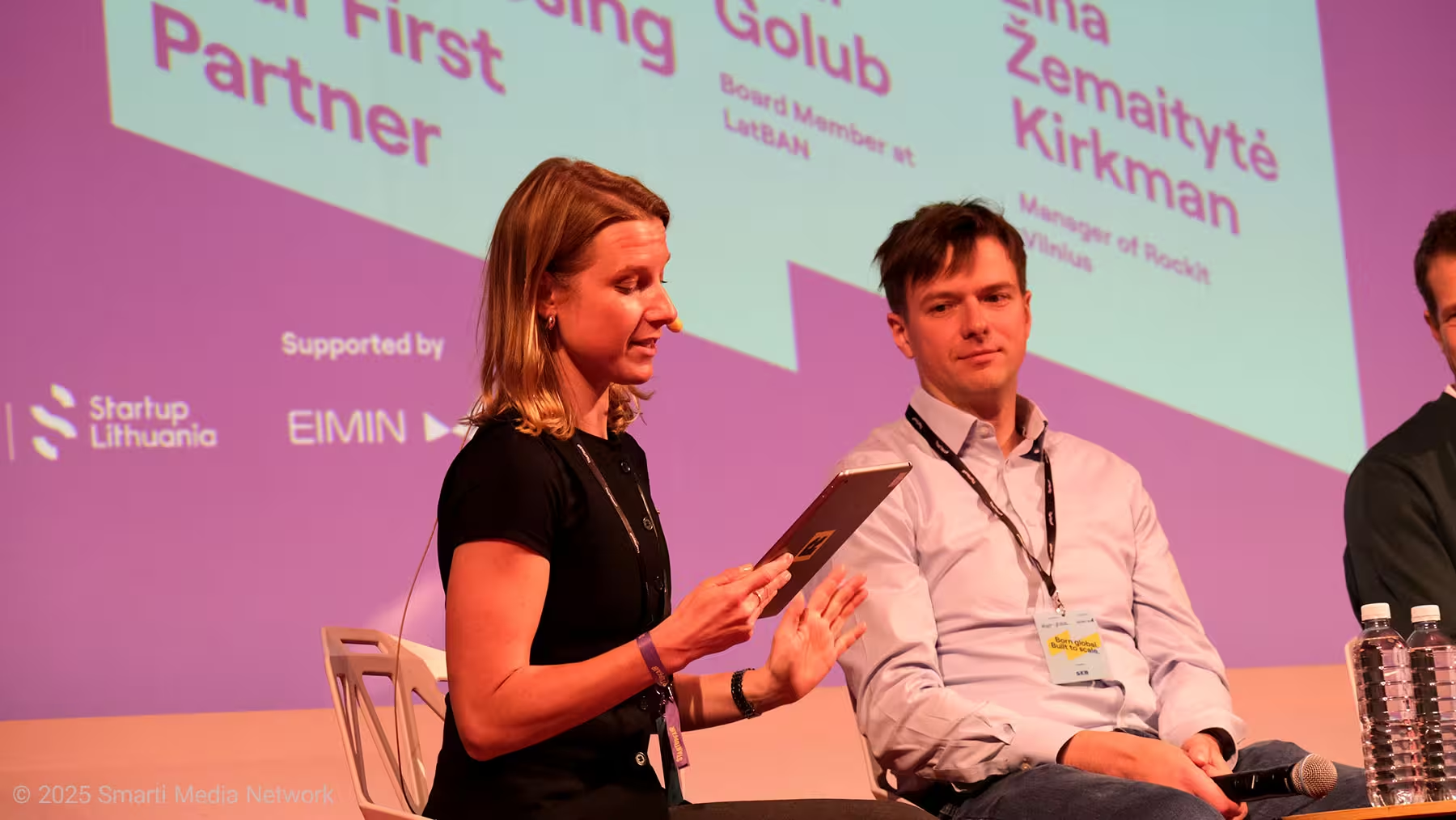
Setting the Stage: Defining the Question
Moderator Kamilė Šulcaitė opened the session by setting the tone. “If you’re launching your first, second, or even third startup, this talk is for you,” she told the audience. “Should you join an accelerator for structure and mentorship? Bring in an angel investor who believes in your vision? Or go straight to a VC for fast growth?”
After introducing the speakers, Šulcaitė expressed her excitement about the vibrant atmosphere at Startup Fair 2025, noting how investors and founders from across the world were connecting in the meeting areas. “Our ecosystem is so colorful this year — investors are flying in from everywhere, and Lithuanian startups are scaling faster than ever,” she said.
She then asked each panelist to introduce themselves with a short “elevator pitch.”
Meet the Panel: Four Perspectives on Growth
Adomas Malaiška began with his background as a serial founder. “I’ve built three startups,” he explained, “and for two of them, I raised either angel or accelerator funding.” He shared that his first accelerator experience was in London with Entrepreneur First (EF). “It’s a very different kind of accelerator,” he said. “They don’t let you build a product at first — they push you to talk to people, to sell before you build. It was tough but transformative.”
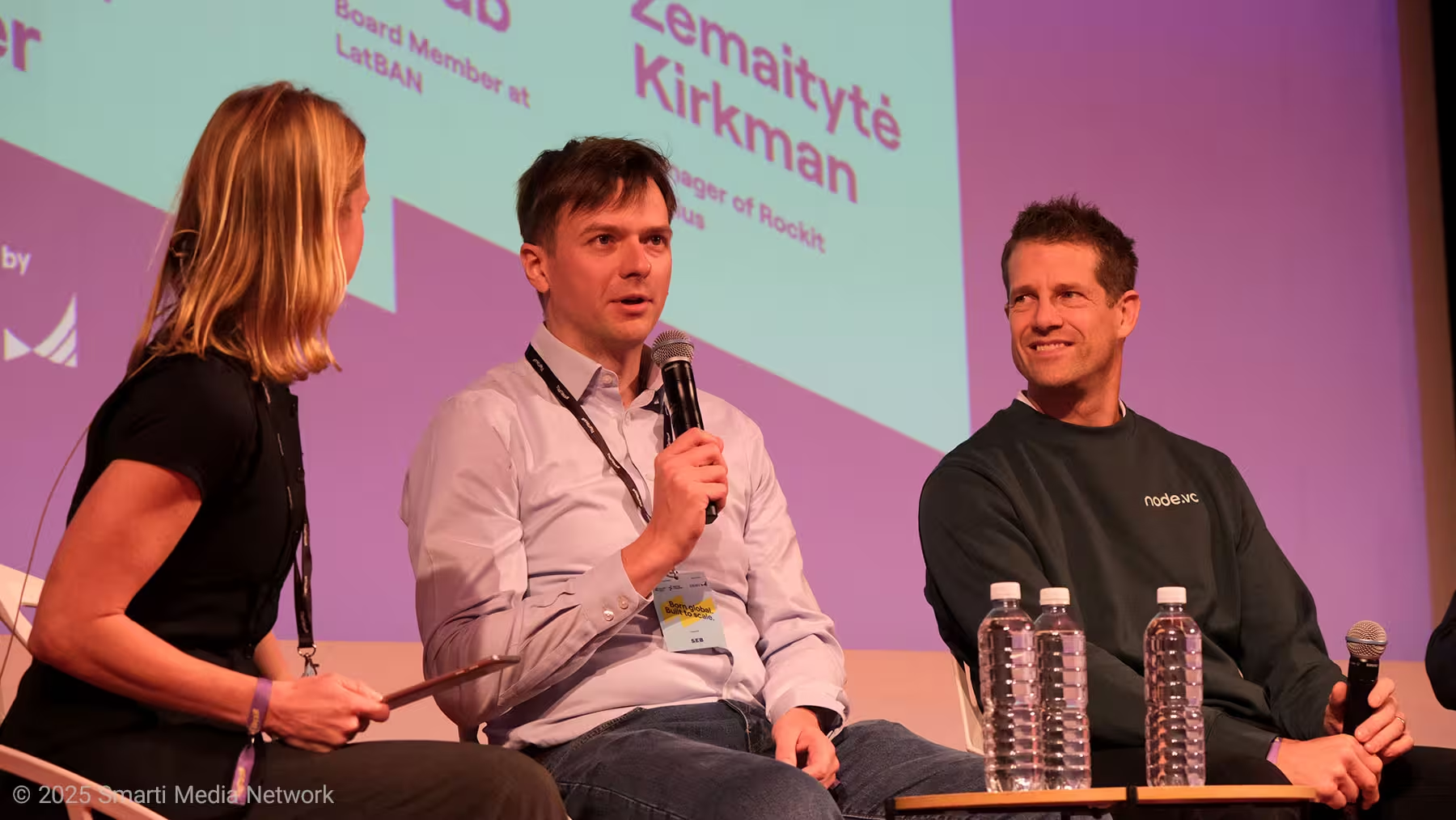
His next experience, he said, was with the HAX accelerator, which only accepts startups that already have prototypes. “That contrast taught me a lot — you have to choose an accelerator based on what you need to learn, not just for funding,” he noted.
Marten Skogo, Partner at node.vc, introduced his fund as a sector-agnostic early-stage VC investing in Nordic and Baltic founders. “My own background is as a founder,” he said. “I started my first company in 1999 and co-founded two companies now listed on NASDAQ. I’ve seen the full VC journey from both sides — as a founder and now as an investor.”
Cyril Golub, a board member at LatBAN and a longtime entrepreneur, described his transition from founder to investor and back. “I sold my company in 2019, spent six years investing in early-stage startups across the Baltics, and now I’m back to building again,” he said. “After 400,000 euros invested, I realized I’d only returned a quarter of that — so I decided to rejoin the game. I’m now building an AI-driven solution for e-commerce.”
Lina Žemaitytė Kirkman, Managing Director at Rockit Vilnius, represented the accelerator perspective. “Rockit is not just a coworking space — it’s an early-stage accelerator and a community builder,” she explained.
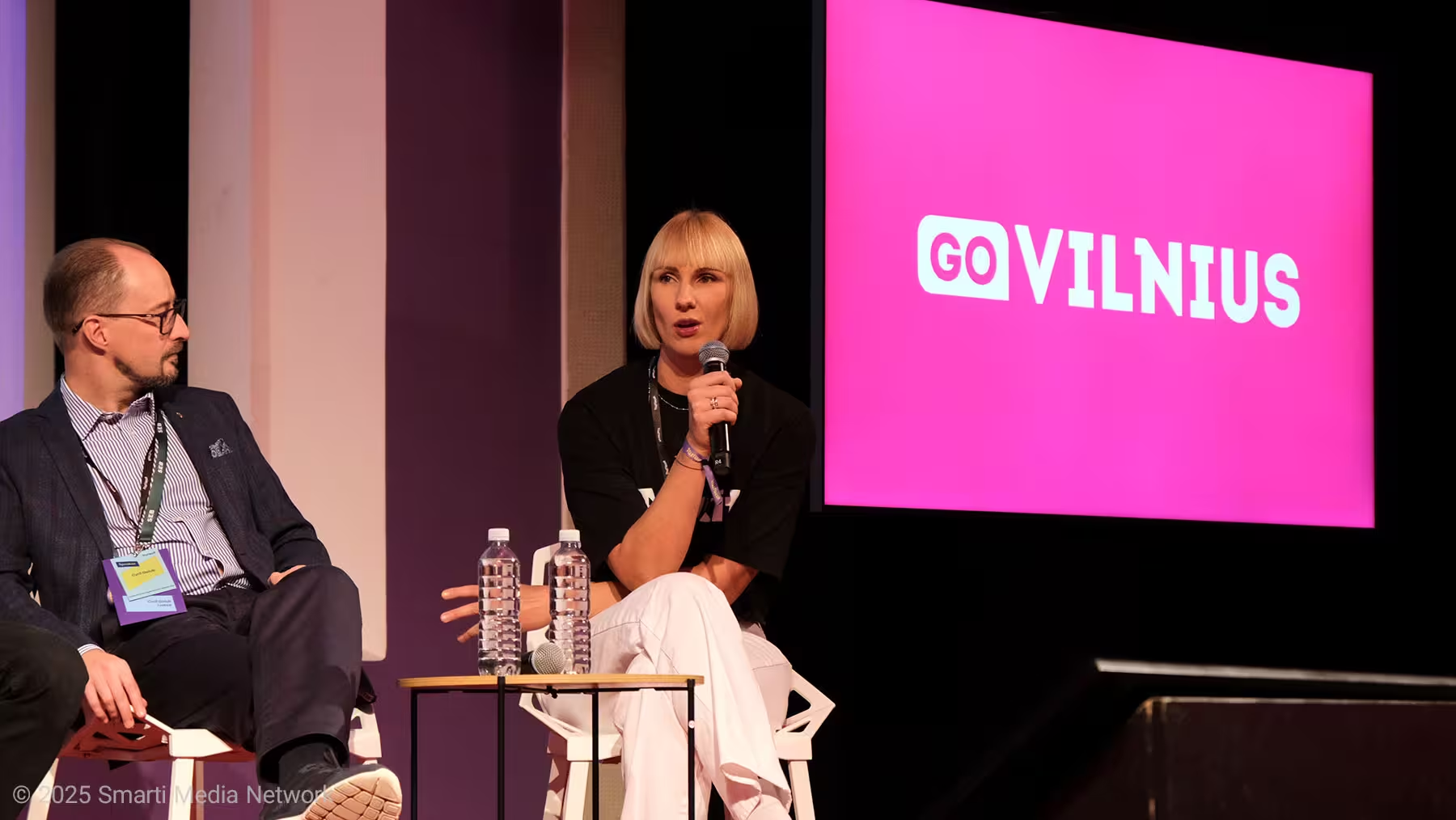
Accelerators: The First Step Toward Focus and Structure
Kamilė asked Lina to explain when and why startups should consider joining an accelerator.
“I’d start by saying it’s not whether or — it’s and, and, and,” Lina answered. “You need all three: accelerators, angels, and VCs. It all depends on your stage. But accelerators should definitely be your first step.”
She emphasized that no investor wants to fund chaos. “Accelerators help founders turn ideas into structured plans. What you might figure out in a year alone, you can achieve in a few months with mentors who’ve already done it,” she said.
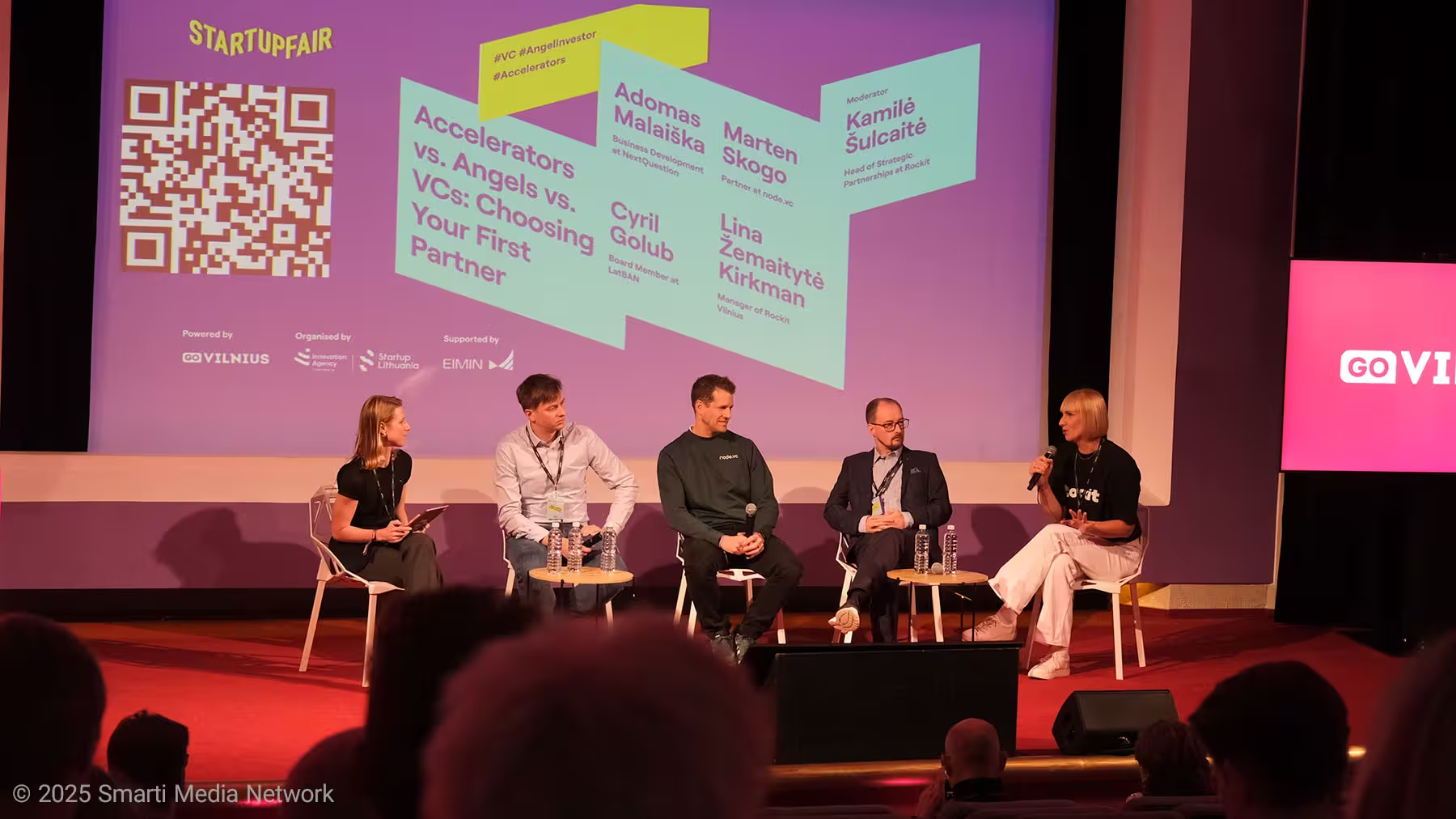
According to her, a good accelerator helps founders validate whether they’re solving a real problem, find their first clients, and build a bulletproof pitch deck. “If you go to an investor after finishing a reputable accelerator, it’s a signal of quality — it shows you’ve done your homework.”
Lina also noted that accelerators teach focus and prioritization. “First-time founders often drown in advice,” she said. “Accelerators help them filter what truly matters.”
The VC View: Timing, Team, and Long-Term Partnerships
Turning to Marten Skogo, Kamilė asked when a startup should approach a VC and what they can expect in return besides funding.
“Founding a startup is chaos,” Marten began with a smile. “An accelerator can help you learn the craft — how to build, how to sell, how to tell your story. By the time you reach us, we want to see a team working full-time on solving a problem that customers see as a must-have.”
He explained that node.vc typically invests for around 10% ownership and works closely with founders at the strategic level. “Choosing an investor is like choosing a long-term partner,” he said. “Pick someone you’d want to solve problems with — someone you like as a person.”
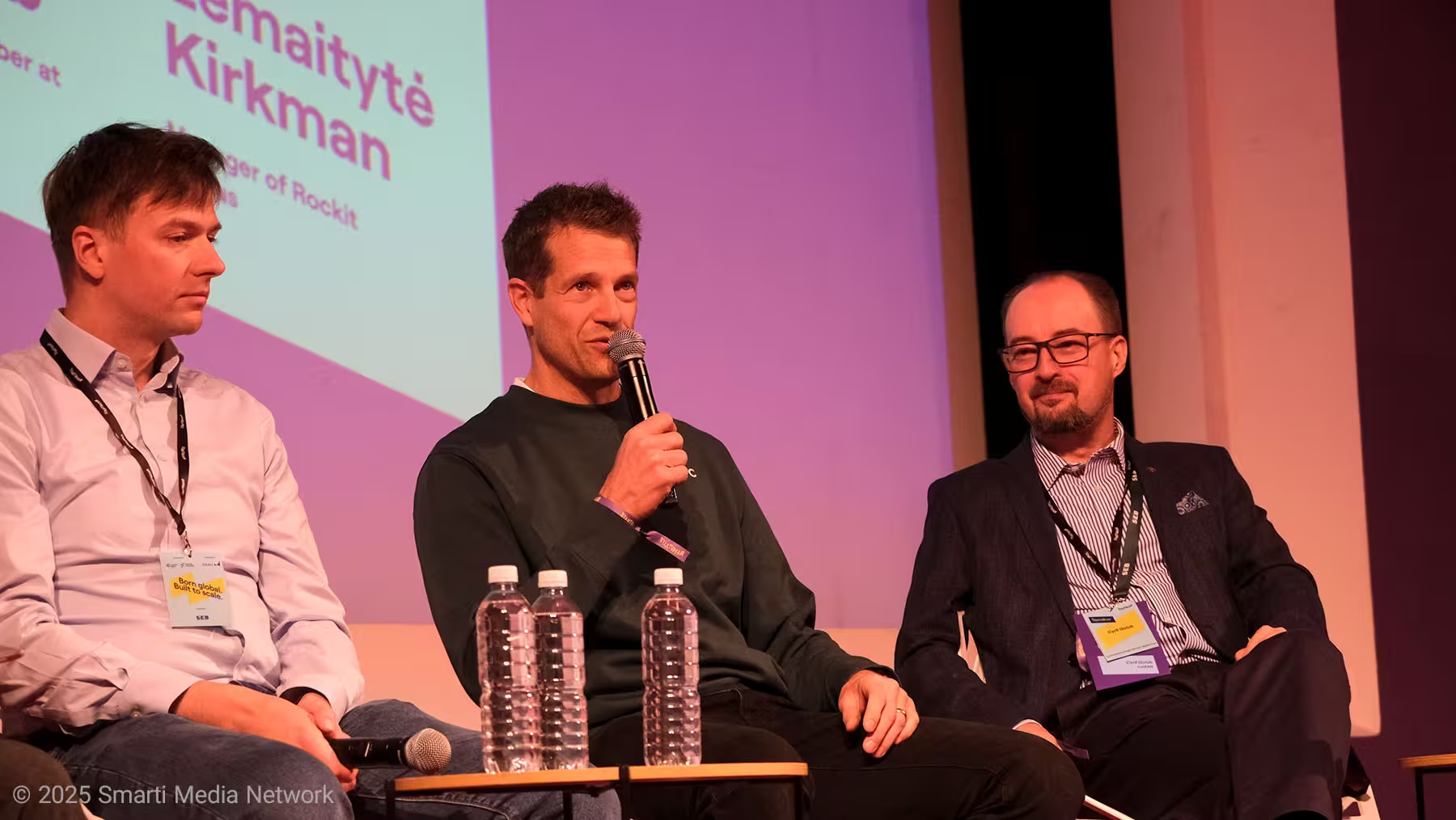
Although VCs bring experience and networks, Skogo stressed that they don’t manage a startup’s day-to-day operations. “We act as a sounding board,” he said. “We’ve built and sold companies, scaled internationally, and gone public — but our job is to guide, not to run your business.”
He contrasted this with accelerators, which provide more hands-on support. “We step in later, once the fundamentals are already in place.”
The Angel Investor’s Perspective: Beyond the Money
Cyril Golub then took the floor to explain what makes angel investors different. “Angels aren’t solo warriors — they should unite in clubs and communities,” he said. “If someone says, ‘I’ll invest 50,000 euros alone,’ that’s not a good sign. Angel investing is a network game.”
He urged founders to look past financial promises. “When you meet an investor, don’t just ask how much they can invest. Ask what they’ve already done. Who have they helped? Which founders can vouch for them?”
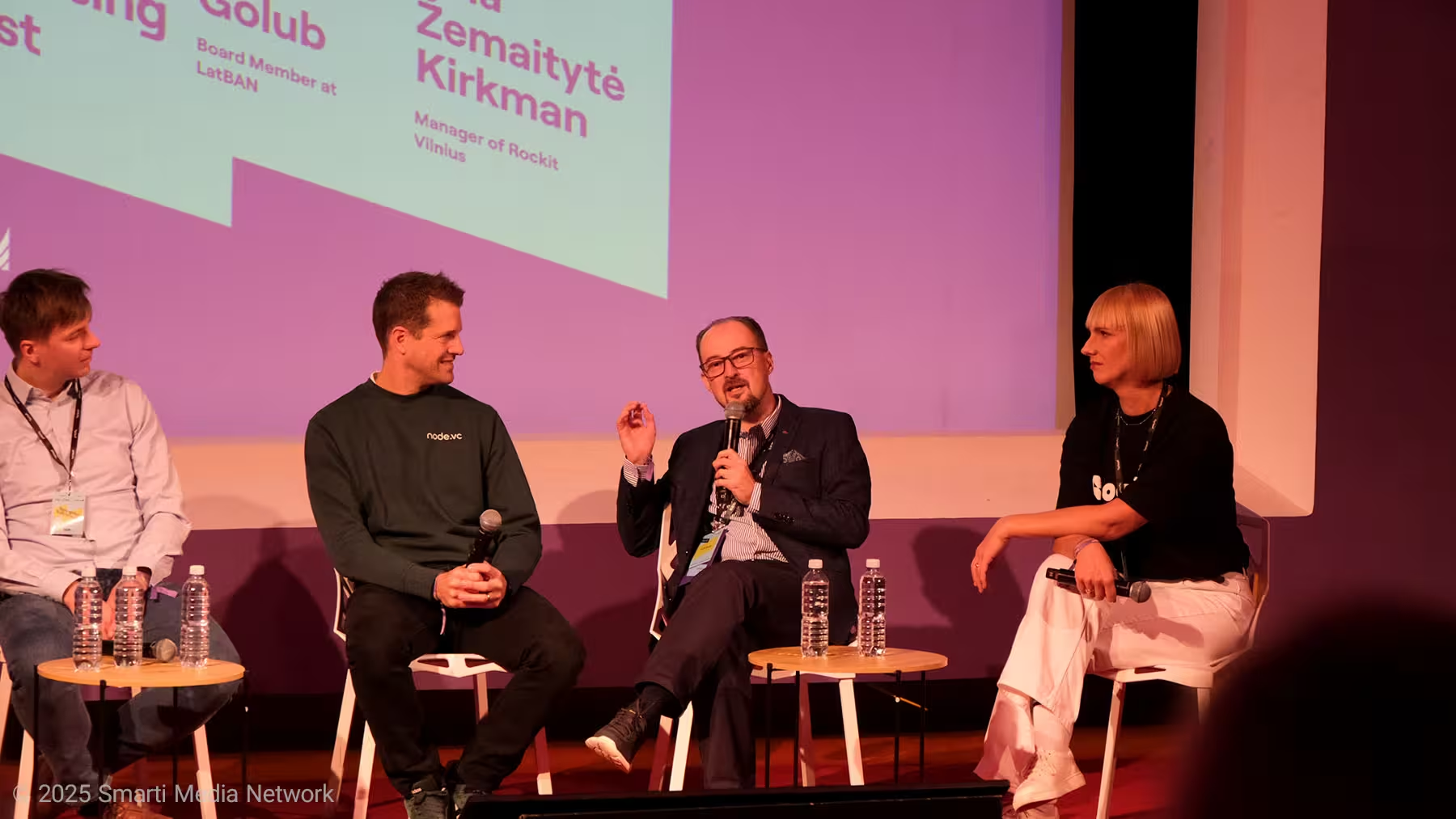
Cyril shared an example from his own network: “A friend of mine runs a fund in New York with his wife, who leads an A-player recruitment agency. They promise access to top talent, but you could reach that agency yourself without their money — so what’s the real added value? Always verify.”
His advice was clear: “Ask for proof. Talk to founders from their portfolio. See if their help is real.”
Adomas agreed, saying that it’s true for both sides. “Investors make big promises, but so do founders,” he said with a grin. “It’s a relationship that needs trust and accountability.”
Accelerators as Bridges in the Startup Journey
Returning to the topic, Lina described what founders typically look for in accelerators — and what they actually get.
“At Rockit, we mostly work with first-time founders,” she explained. “Their main questions are very basic: ‘Is this really a problem worth solving?’ ‘How do I get my first customers?’ ‘How do I raise funding?’”
She said the accelerator’s role is to shorten the learning curve. “We give them structure, mentorship, and most importantly — access. We connect them with B2B clients, investors, and angels. The network is everything. For first-time founders, introductions and trust are often more valuable than money.”
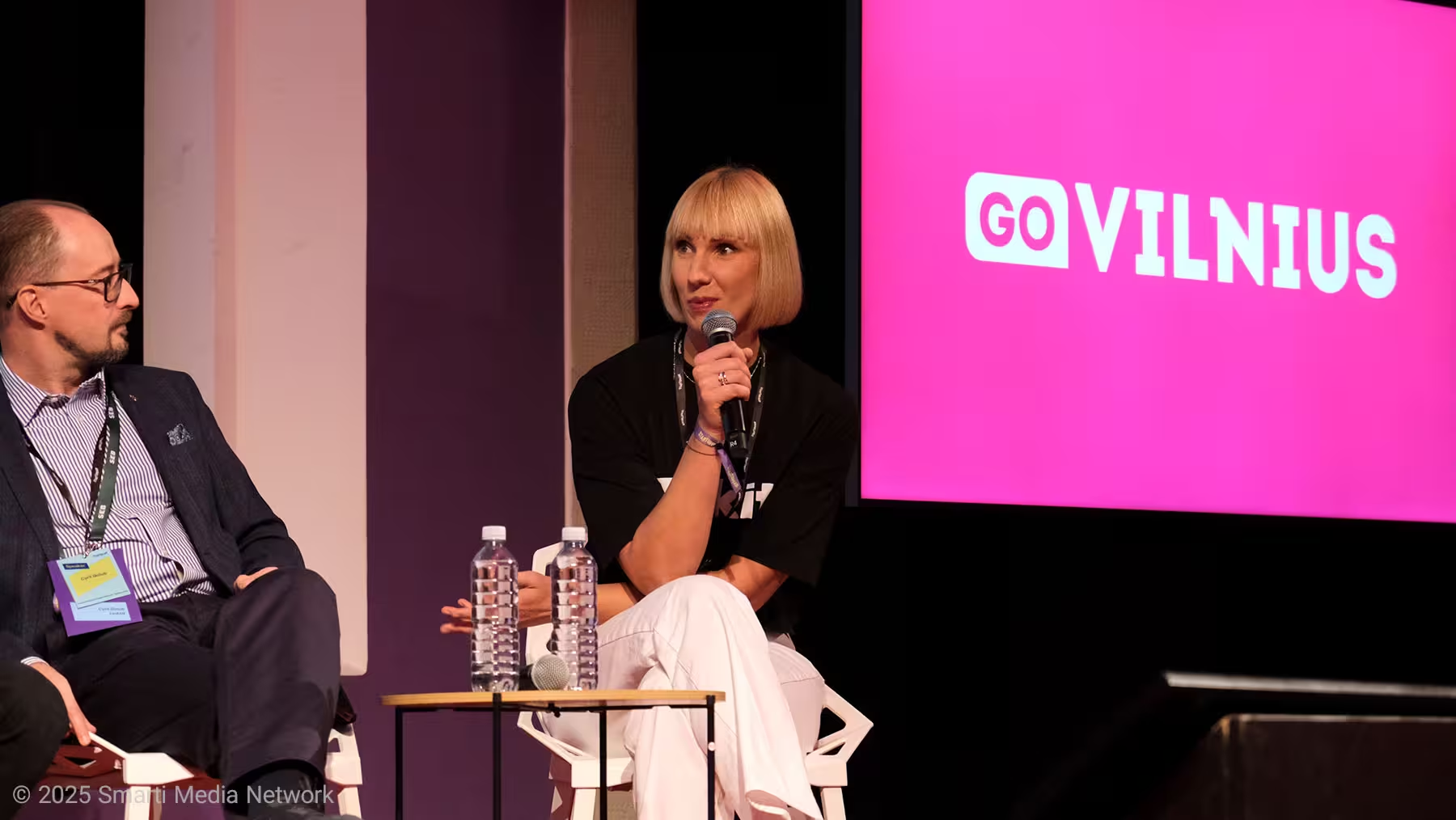
When asked about “opening doors,” Lina clarified that accelerators don’t just connect founders to investors. “We open doors to clients, to real business traction,” she said.
Marten added that from the VC perspective, structured accelerators make scouting easier. “We look at about 3,000 companies per year,” he said. “When a startup comes from a good accelerator, we know they’ve had some initial vetting. That helps both sides.”
Collaboration and Combining Paths
Cyril emphasized that the best founders often combine these options. “Mix the power of accelerators, angels, and funds,” he said. “Each plays a role. From accelerators, you get structure; from angels, mentorship and network; from VCs, scale and follow-on capital.”
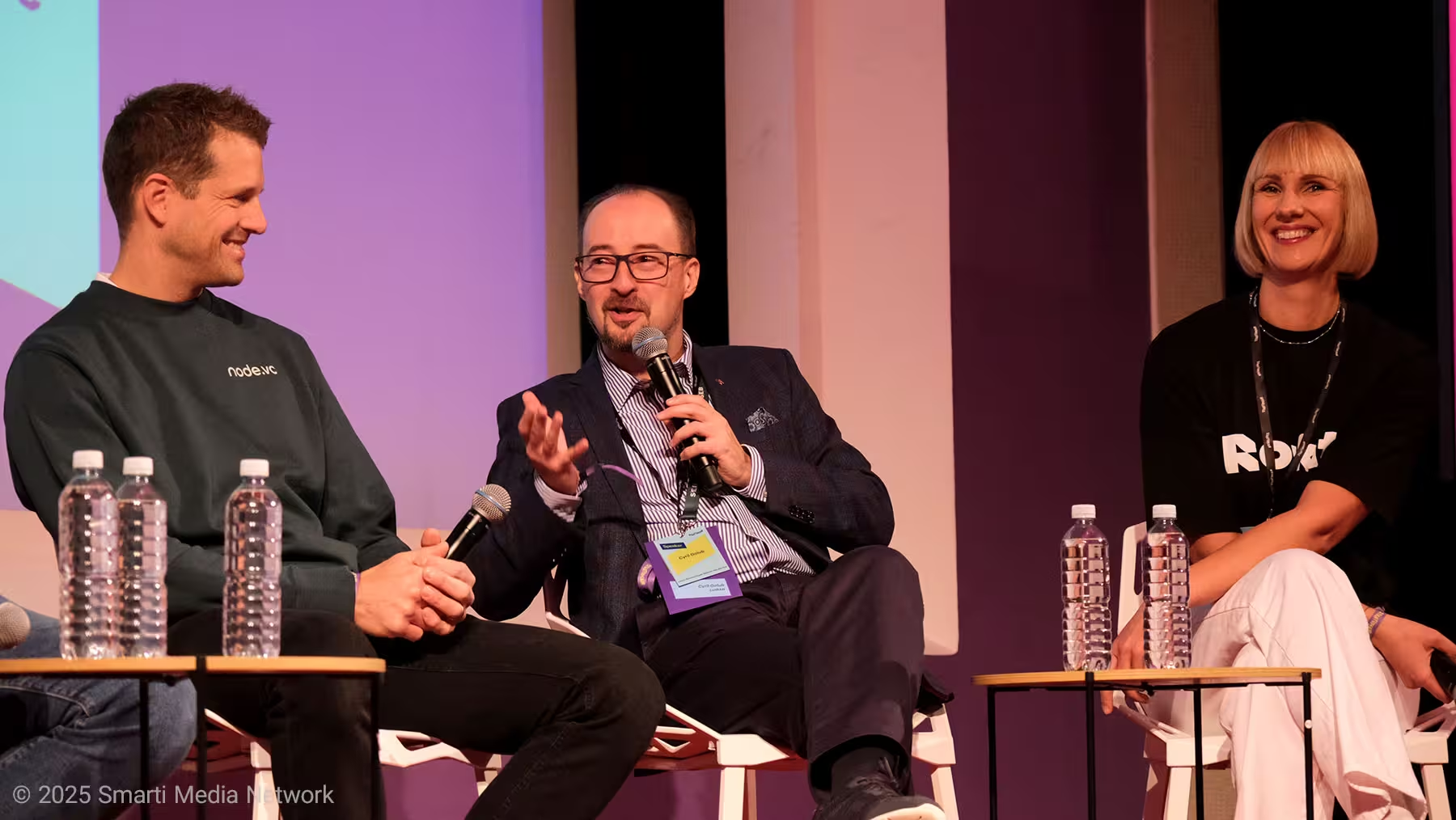
He also warned founders to manage investor relationships properly. “If you have ten angel investors, you don’t want ten people demanding reports. Make sure communication goes one way — your updates to them, not the other way around.”
Marten agreed, adding that professional VCs dedicate part of their fund specifically for follow-on investments. “Less than half of our fund is invested at entry — the rest is reserved to back the top performers later,” he said.
Lessons from Experience: Founders’ Advice
When asked what he would do differently, Adomas reflected on his early days. “A VC once told me: just build a great business and investors will come,” he recalled. “At the time, we were pitching with only a PowerPoint. That advice stuck with me. If your business makes money, everything becomes easier.”
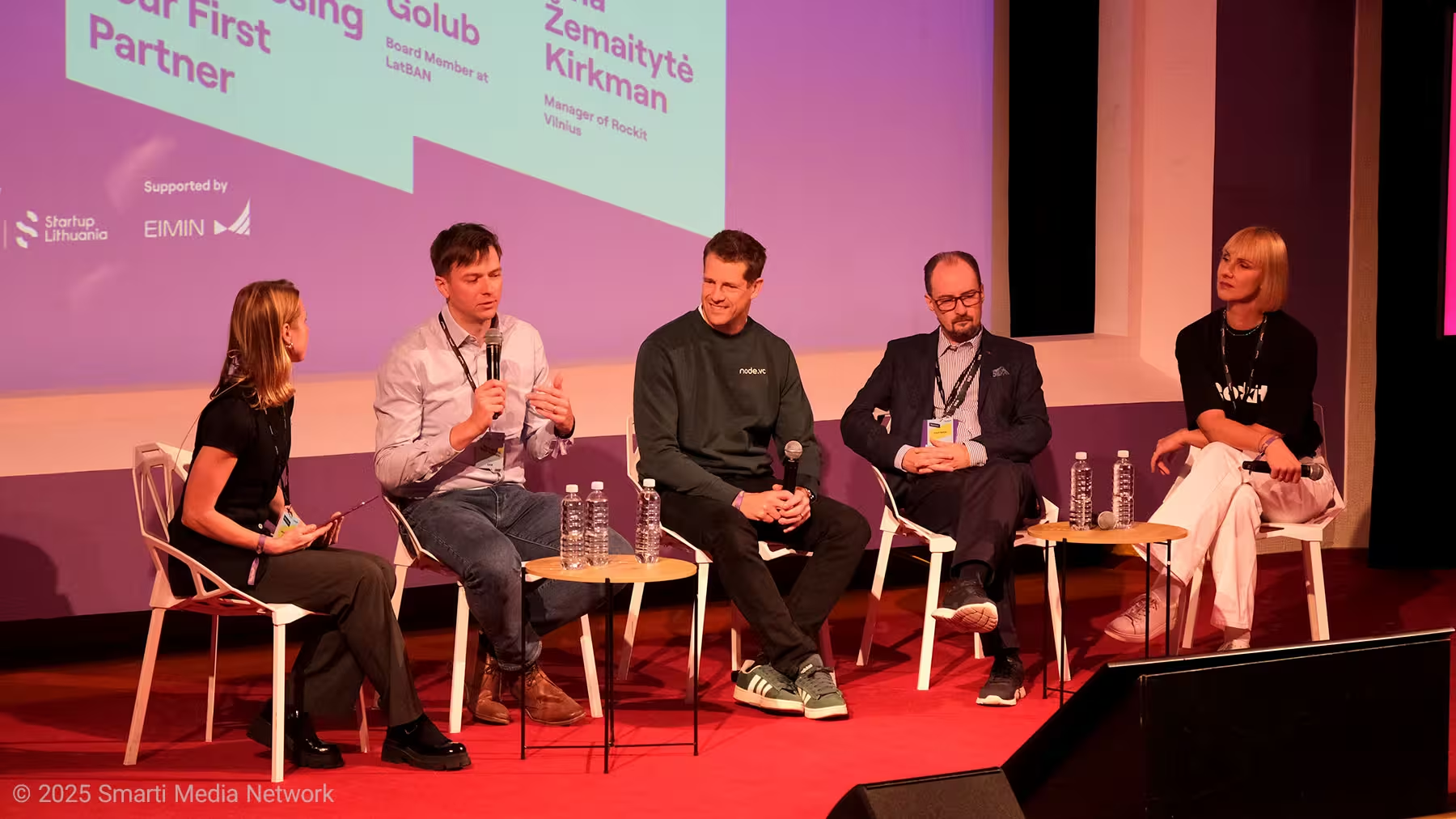
He also supported the staged approach. “Go through an accelerator, then work with angels, then VCs. Each step prepares you for the next. Accelerators teach you the craft, angels open doors, and VCs help you scale.”
Are Investors Tired of AI Startups?
An audience member asked if investors are growing tired of AI startups.
Cyril replied instantly. “AI is not a hype — it’s a must. No company will survive the next decade without AI integrated into its workflow.”
Marten agreed but stressed customer understanding. “AI is a tool. You must know the customer and apply it intelligently. We invest in companies where AI is embedded in the product — not just a buzzword.”
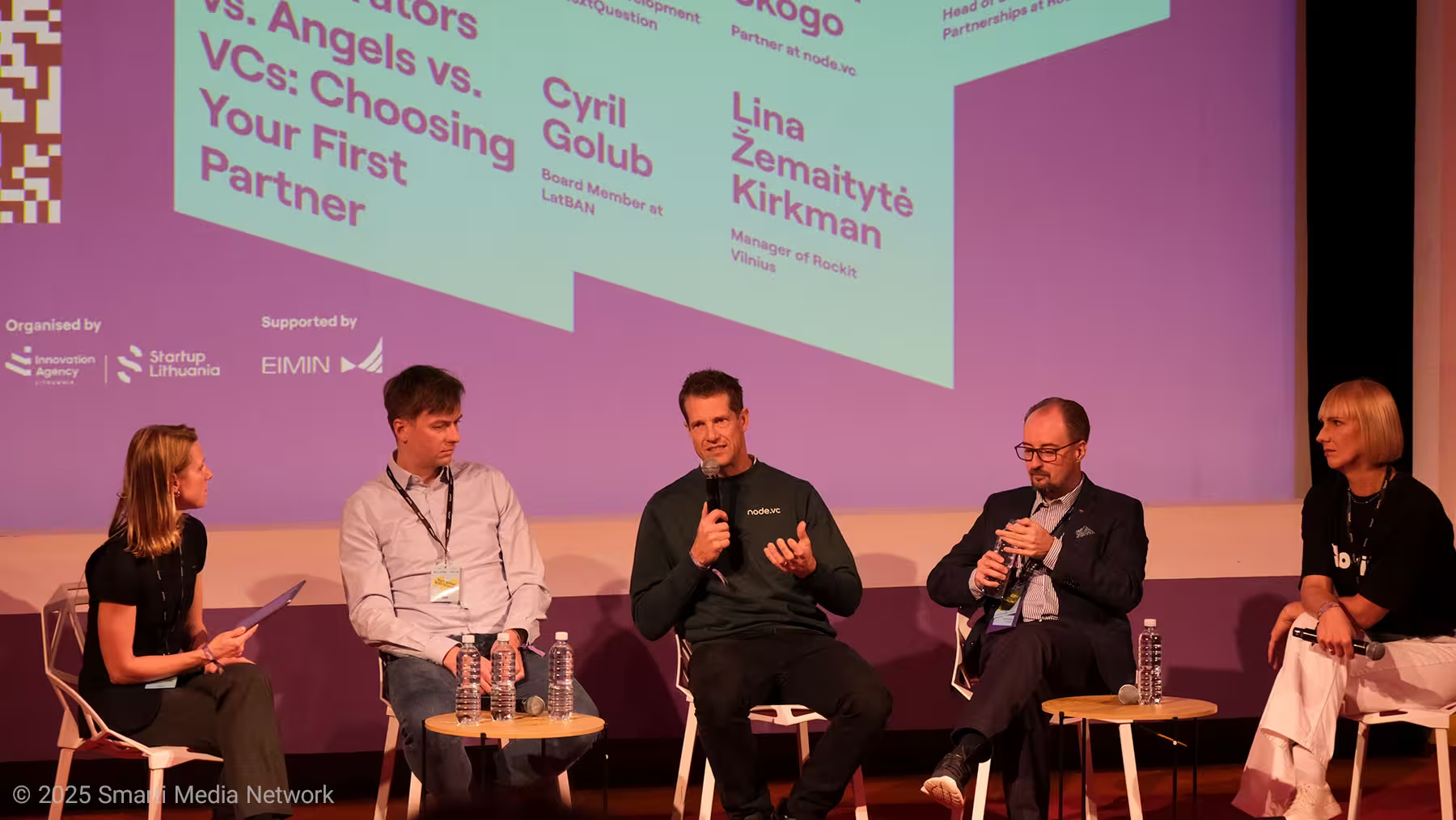
Lina compared today’s AI boom to the early days of digital transformation. “Seventeen years ago, banks treated digital as an experiment. Now it’s everywhere. That’s what’s happening with AI — soon it won’t be a separate thing; it will be hygiene.”
What Makes Investors Say Yes
The final audience question asked what makes investors say yes to an early AI startup.
Marten replied: “If it doesn’t have a clear moat, it must grow extremely fast. It needs a rockstar team, strong traction, and clear defensibility.”
Cyril summarized his criteria in three points: “High scalability, positive unit economics, and a team capable of building something huge.”
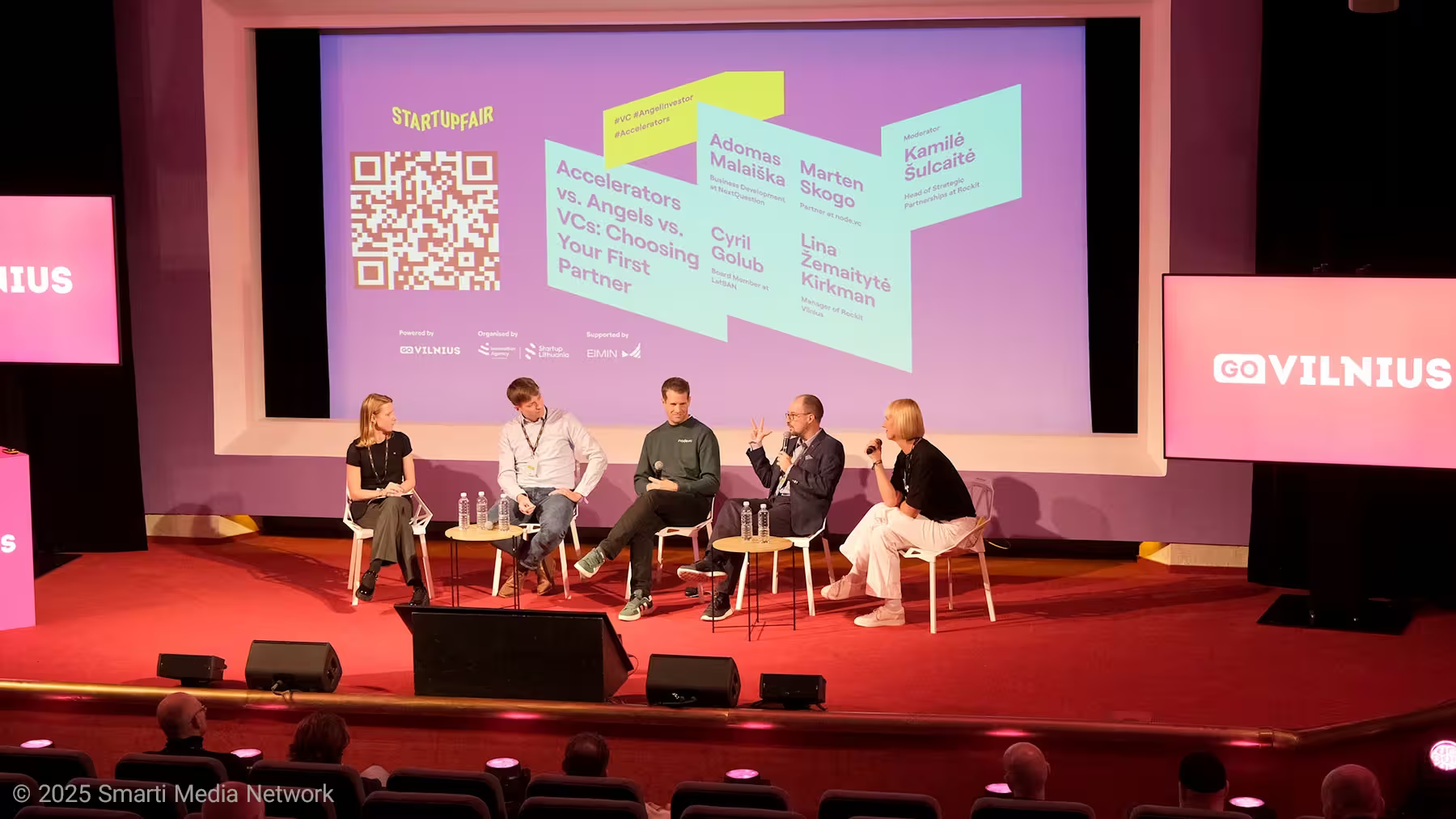
Lina concluded: “At the end of the day, AI is just a tool. What matters is the problem you’re solving — and whether people will pay for it.”
Final Takeaways: Three Words of Advice
Before closing, Kamilė asked each panelist to summarize their advice in three words.
Lina: “Focus. Direction. Network.”
Cyril: “Trust your customers only.”
Adomas: “Start with customers. Make money.”
Marten: “Ambition. Global vision. Hard work.”
As the session ended, Šulcaitė thanked the speakers and the audience. The Hive Stage buzzed with conversations, as founders lined up to talk with the panelists — a fitting conclusion to a discussion about partnership, growth, and the importance of choosing wisely when starting the startup journey.
Comments
data.x
Feels a bit polished, like startup bingo sometimes. Still, useful pointers for noobs. Where's the war stories tho? 😅
skyspin
Pretty balanced take. Network matters more than cash at day 0, esp for first timers. Focus, direction, network, true
Marius
I ran a tiny SaaS through an accel last year, totally sped up our product-market fit. But angels opened doors to clients, for real
labcore
Are VCs really tired of plain AI startups? Sounds like noise vs product debate... show me users not benchmarks
v8rider
Seems logical tbh. Start with an accelerator, then angels, then VC, staged funding makes sense, saves headaches
mechbyte
Wow the Hive Stage energy, love it. Practical advice on accelerators, angels and VCs, not just hype. Makes me wanna try again, though kinda scary too.

.webp)
Leave a Comment